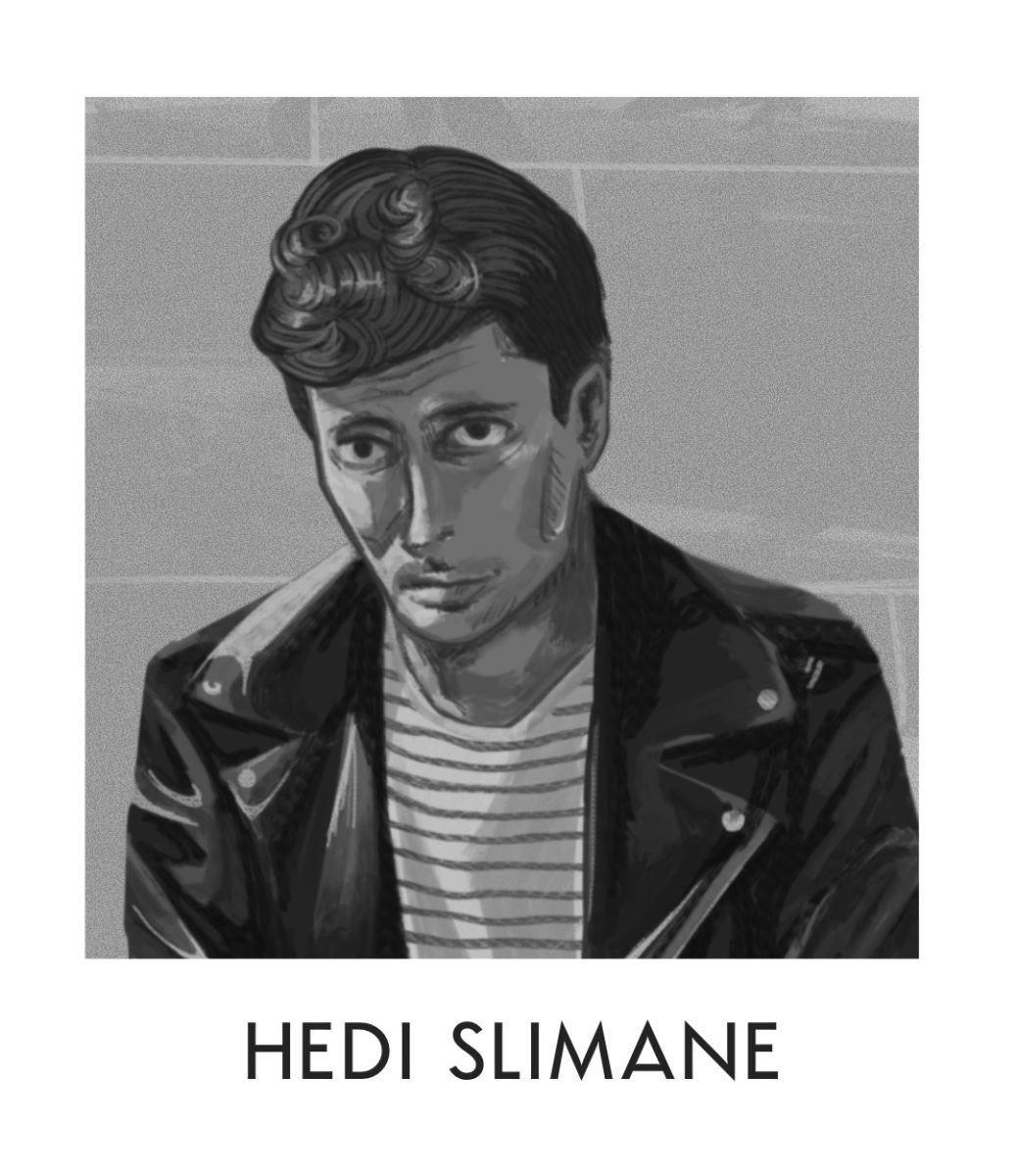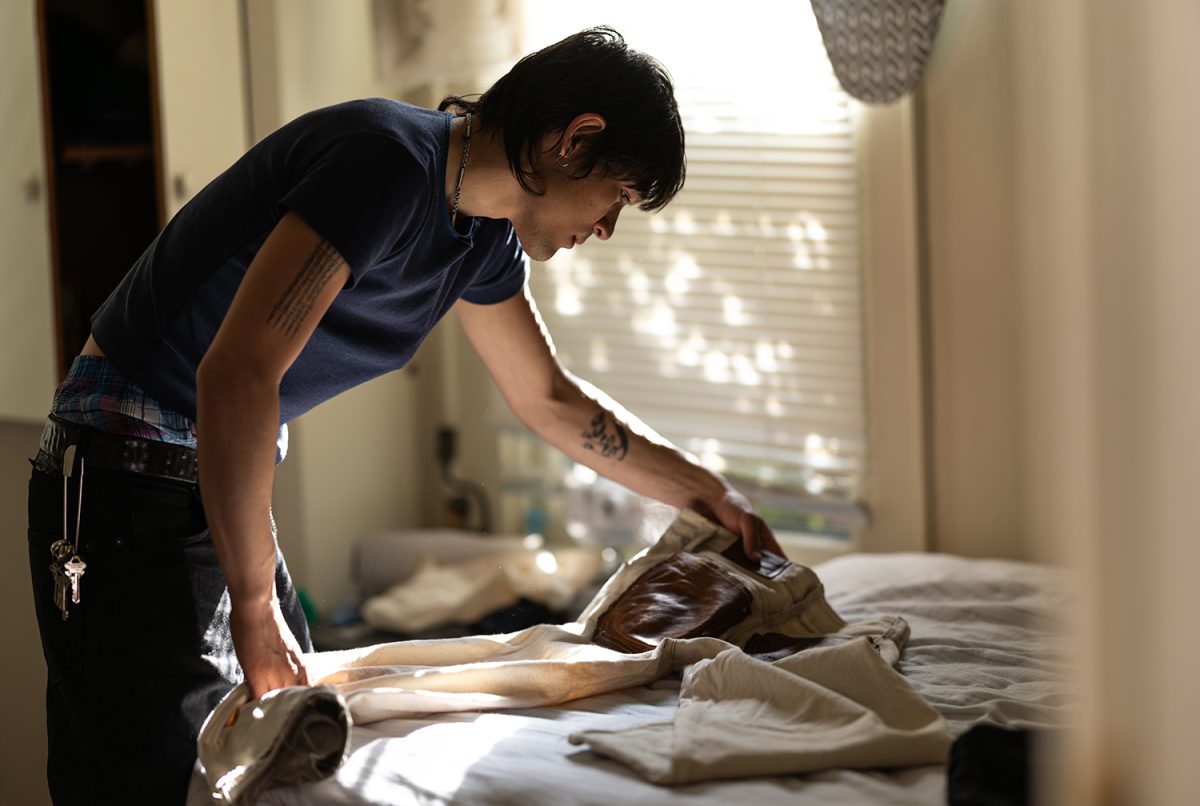It’s hard to imagine now, but there used to be a time when skinny jeans weren’t seen as the deadliest sin in fashion. In 2005, trucker hats, Juicy tracksuits and silicone bracelets dominated the fashion scene. For men, bootcut jeans, sweats, and cargo pants were the go-to for bottoms. It wasn’t until Dior Homme’s early aughts collections that we saw the modern iteration of skinny jeans we’re so used to dogging on today. So, who was behind it? None other than the Italian-Tunisian enigma Hedi Slimane.
By 2005, Slimane had already worked for Saint Laurent and had been working at Dior for five years. He had already begun to make a name for himself, but the era he was entering would be what propelled him to the legendary status he enjoys today.
The child of a seamstress and an accountant, Slimane grew up in Paris. A true product of his environment, he was interested in fashion from a young age and later graduated from the École du Louvre in Paris in 1992 with a degree in art history.
Slimane’s entry into the fashion industry started with a bang, as he worked as an assistant for Jean-Jacques Picart for the Louis Vuitton monogram canvas project: A celebratory exhibition with big name designers like Helmut Lang and Vivienne Westwood designing bags using the Louis Vuitton monogram.
During Slimane’s three years with Picart, Picart introduced him to Pierre Bergé, the cofounder of Saint Laurent. In 1996, Bergé hired Slimane, despite his lack of formal training in fashion design, as the director of the house’s mens ready-to-wear collections. A bit of a gamble, but one that paid off.
Slimane unveiled his first collection for Saint Laurent, “Black Tie,” in the winter of 2000 in a runway show whose audience included Yves Saint Laurent himself. “Black Tie” birthed the first iteration of what would become Slimane’s calling card: slim and sleek silhouettes and a hypermodern interpretation of masculinity all informed by his interest in music culture.
In a 2010 interview with Vogue, Slimane said, “Fashion = music + youth + sex. This is what my menswear and my style were always about.” As ridiculous as the first part of that statement may sound, he’s really not kidding. His aesthetic appears as the conceptual love child of ‘90s heroin chic, ‘60s rockstars and his own secret sauce of cool.
At age six, Slimane received a record of David Bowie’s album, “David Live,” and at age 34, when he became the first menswear designer to win the Council of Fashion Designers of America award for international designer, he was presented the award by Bowie himself. In a short time, Slimane had already surpassed names that had been in the industry for decades as the next big thing.
He was becoming the rockstar he designed for, and his upcoming partnership with Dior Homme would turn out to be what many consider to be his best work. At Dior Homme, Slimane perfected his slim cut clothes. Pieces from this era, like these skinny jeans from the fall/winter 2003 “Luster” collection, have become holy grails for fashion heads and regularly sell for upwards of $1000.
He was cranking out pieces that tastemakers and fellow designers couldn’t resist. Karl Lagerfeld famously fell for the allure of Slimane’s masterful if not unrealistic tailoring. Lagerfeld wrote in an article for The Telegraph that his desire to fit into Slimane’s suits for Dior Homme led him to lose “six of my 16 stone.” Say what you will about the issues that could arise from a mindset like Lagerfeld’s, but there’s no denying the new era Slimane was spearheading with his skeletal glam rock style.
Prior to Slimane’s work, most big name menswear shows showed a more classic example of a masculine man. The older, wider silhouettes with emphasis on the shoulders were flipped upside down when Slimane had his way. “For me, masculinity is not an idea of the body, it is an idea of the mind,” Slimane said in this interview for Style.com.
Just look at Slimane’s spring 2005 menswear collection. Slim and soft shoulders, thin but tailored pant-legs, V-neck t-shirts and sleeveless button downs. Pair that with tall and skinny models who look like they’re all a part of the same rebellious garage band, and you have a very different image of masculinity. It’s youthful, sleek and modern. The looks from this show look like what you would get if you went back in time and introduced blogging to the mosh pit goers of a Rolling Stones show. If Crystal Castles and the Sex Pistols meshed, this is how they would dress.
Slimane’s exploration of masculinity goes beyond clothing too. In 2005, Dior released Dior Homme, developed by master perfumer Olivier Polge and Hedi Slimane. The duo worked together to craft a fragrance that centered on iris, a traditionally feminine note in perfumery, and turned it into something fit for Slimane’s modern man. It was new and exciting, just as Slimane’s clothes were, and it blurred the lines of what it meant to be a man in fashion.
Slimane continued his work with perfumery during his most recent tenure at Celine, but after his recent exit this October, his future is uncertain. He closed the door on a high note with the brand, having started its menswear line and doubling its sales, and it almost seems as if there’s no more boxes for him to check off.
There are rumors he’s heading to Chanel, but some are weary of Slimane’s headstrong approach. While working for Saint Laurent, he famously dropped the “Yves” from the brand name, and similarly cut the accent over the “e” when he was at Celine. He’s drawn criticism for not preserving the DNA of the brands he works for, and this is a valid point. If you threw a collage together of all the collections Slimane was behind at Dior, Saint Laurent and Celine, it might be a little too difficult to discern who’s who. The only identity present would be Slimane’s, which shouldn’t come as a surprise as he’s said he’s “not much into compromises.”
Die hard Slimane disciples are praying for an eponymous label, but only time will tell what we see next. In the meantime, throw on, or throw away the skinny jeans in the back of your closet. Slimane won’t care either way.














